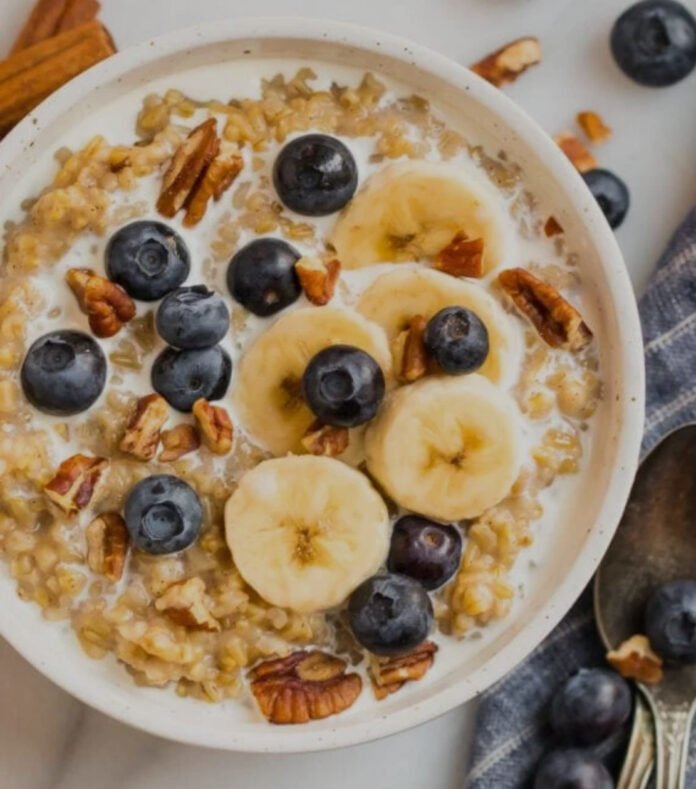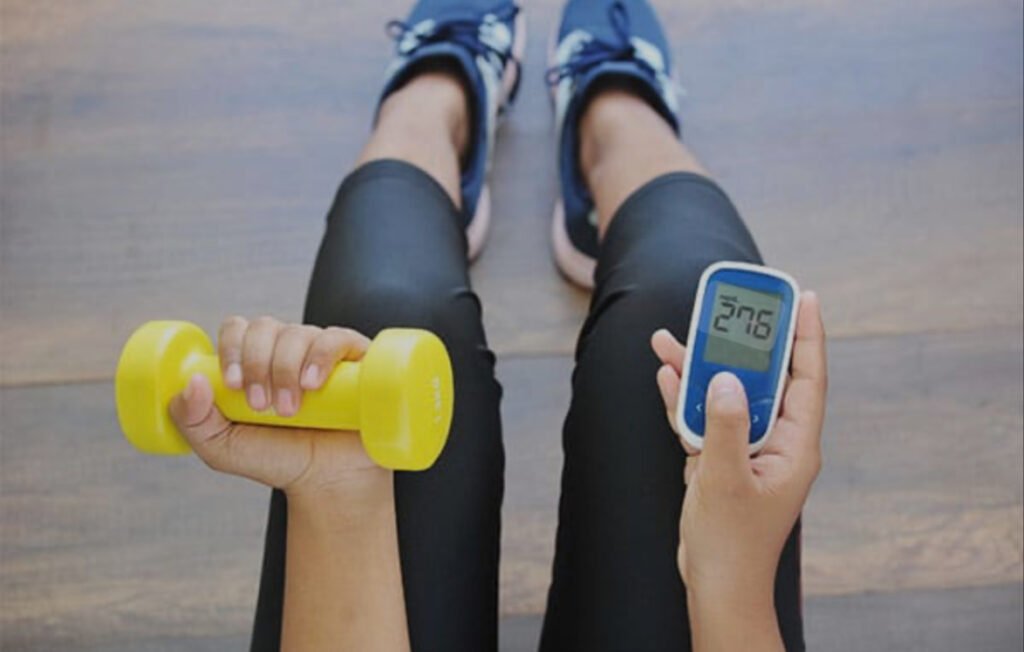Introduction: Why Nutrition Matters When You Workout With Diabetes
Managing diabetes while staying active isn’t just about lowering A1C or losing weight — it’s about building long-term vitality, reducing health risks, and feeling your best every day. If you’re living with type 1 or type 2 diabetes, the foods you eat before and after a workout play a crucial role in blood sugar stability, performance, and safety.
When you do a workout with diabetes, your body’s insulin sensitivity increases, glucose metabolism shifts, and your nutritional demands change. That’s why eating the wrong foods — or skipping meals entirely — can lead to unstable blood sugar, extreme fatigue, or even dangerous lows and highs. But with the right approach to nutrition, you can unlock all the benefits of exercise without compromising your health.
Whether your workout with diabetes involves walking, weightlifting, running, yoga, or high-intensity interval training, smart pre- and post-workout nutrition helps:
- Stabilize blood glucose before, during, and after exercise
- Improve your strength, endurance, and energy
- Reduce the risk of hypoglycemia during or after activity
- Promote faster recovery and muscle repair
- Support healthy weight loss and metabolic function
The biggest mistake many people make when doing a workout with diabetes is ignoring how food timing and meal composition affect their results. You don’t have to guess your way through fitness and blood sugar management. With a little planning, you can eat with purpose, train smarter, and avoid setbacks.
This guide will walk you through 5 essential tips for eating before and after a workout with diabetes. These evidence-based strategies are designed to support your energy, protect your health, and empower your fitness journey — one meal at a time.
If you’ve ever wondered what to eat, when to eat, or how to handle a low during a session, you’re in the right place. Mastering what you consume around your workout with diabetes is one of the simplest, most impactful changes you can make.
Let’s dive into the practical, expert-backed advice that will help you make your workouts both safe and effective—whether you’re just starting out or already active.
This article gives you 5 essential nutrition tips to help you eat smarter and stay in control before and after any workout with diabetes.
1. Choose the Right Pre-Workout Carbohydrates
Eating carbohydrates before your workout provides a steady energy source and helps avoid blood sugar crashes. But not all carbs are created equal. For people managing diabetes, choosing low-glycemic, complex carbohydrates is key.
Smart Pre-Workout Carb Options:
- Oatmeal with almond butter
- Sweet potato with cottage cheese
- Whole grain toast with avocado
- Greek yogurt with chia seeds
- Apple slices with peanut butter
These foods release energy slowly, minimizing blood sugar spikes while giving you enough fuel for your session.
Timing Tip:
Eat your meal 30 to 60 minutes before exercise to give your body time to digest and stabilize glucose levels.
Avoid sugary snacks or refined carbs like white bread, candy, or soda before your workout—they can cause blood sugar to spike and crash.
2. Prioritize Protein for Recovery and Muscle Repair
Protein is essential for repairing muscles after any workout with diabetes, especially resistance or high-intensity training. Including lean protein post-workout supports muscle growth while keeping your blood sugar steady.
Best Post-Workout Proteins:
- Grilled chicken or turkey breast
- Scrambled eggs or tofu
- Protein smoothie with low-carb ingredients
- Low-fat Greek yogurt
- Fish like salmon or tuna
Combining protein with a small portion of carbs post-exercise helps replenish glycogen and accelerates recovery—especially important if you workout regularly.
3. Monitor Blood Sugar Before and After Every Workout
Even the best meal plan can’t replace real-time data from your blood sugar readings. Everyone reacts differently to exercise and food, so tracking is essential.
Before Exercise:
- Test your blood sugar 15–30 minutes before your workout.
- Aim for levels between 90–180 mg/dL.
- If it’s below 90, have a small carb-rich snack.
After Exercise:
- Recheck your levels immediately and 2 hours post-workout.
- Adjust your next meal based on whether you’re trending high or low.
Using a continuous glucose monitor (CGM) can simplify this, giving real-time insights into how your workout with diabetes impacts your levels.
4. Stay Hydrated With the Right Fluids
Hydration is just as important as food—especially for those managing diabetes. Dehydration can cause blood sugar levels to rise, and you may not feel thirsty until it’s too late.
Healthy Fluids to Drink:
- Water (always the best choice)
- Coconut water (in moderation)
- Unsweetened herbal teas
- Electrolyte drinks with no added sugar
- Avoid energy drinks, sugary sports drinks, and soda. These can spike your blood sugar and provide little hydration value.
If you’re exercising for more than an hour, consider an electrolyte-enhanced water, but read labels carefully.
5. Customize Your Meals Based on Workout Type and Duration
Not every workout with diabetes is the same. A long cardio session will impact your blood sugar differently than a 30-minute strength routine. Tailoring your pre- and post-workout meals helps you stay balanced.
For Strength Training:
- Pre-workout: Complex carbs + protein (e.g., eggs and oatmeal)
- Post-workout: Lean protein + small carb (e.g., turkey wrap)
For Cardio:
- Pre-workout: Small carb-focused snack (banana + peanut butter)
- Post-workout: Mix of carbs + protein (chicken and brown rice)
For Short Workouts (Under 30 Minutes):
- You may not need a full meal. A small snack or nothing at all could be sufficient if your blood sugar is in range.
Always adjust based on your glucose response. The more you observe and log, the better you can customize your meals for future workouts.
Bonus Tip: Know the Signs of Blood Sugar Swings During a Workout With Diabetes
Being aware of your body during exercise is just as important as fueling it. Watch out for these signs:
Signs of Low Blood Sugar (Hypoglycemia):
- Shakiness
- Dizziness
- Sweating
- Rapid heartbeat
- Fatigue
Solution: Eat a fast-acting carb like glucose tablets, raisins, or juice (15g carbs) and wait 15 minutes to recheck.
Signs of High Blood Sugar (Hyperglycemia):
- Blurred vision
- Dry mouth
- Frequent urination
- Headache
- Nausea
Solution: Recheck blood sugar, hydrate, and consult your healthcare provider if it persists.
Always keep a snack or glucose tabs with you when doing a workout with diabetes, especially if it’s new or longer than usual.
Final Thoughts: Empowering Your Fitness Journey With Diabetes
Eating right around your workout with diabetes isn’t just a nutrition tip—it’s a lifeline. Each choice you make before and after physical activity helps shape your long-term health, stabilize blood sugar, and enhance physical results. While it can feel overwhelming at first, the power of routine and knowledge makes it not only manageable but empowering.
Too often, people with diabetes are told to avoid exercise or be cautious. But the truth is, when approached with care and planning, working out becomes one of the best tools to manage type 1 or type 2 diabetes. The key is to prepare your body with the right nutrients and stay informed through regular glucose monitoring.
Think of your pre- and post-workout meals as part of your treatment plan. When you fuel up properly—balancing carbs, proteins, and hydration—you reduce the risks of hypoglycemia and hyperglycemia while promoting better cardiovascular and muscular health.
It’s also about listening to your body. Every person with diabetes responds differently to food and exercise. What works for one might not work for another. That’s why personal experimentation (and consistency in tracking) is so important. Write down what you eat, how you feel during the workout, and what your blood sugar levels are before and after. Over time, patterns will emerge, making it easier to optimize your routines.
Hydration, too, is often overlooked but critically important. A dehydrated body can cause higher blood glucose readings and reduce workout efficiency. Always drink water before, during, and after workouts, and consider electrolytes if you’re engaging in longer sessions or sweating heavily.
Let’s not forget mental clarity and emotional health. Knowing you’ve prepared the right way gives you peace of mind and reduces anxiety around blood sugar fluctuations. You’ll approach your workouts more confidently, and that mental state alone boosts motivation and consistency.
In the end, it’s not just about one good workout or one perfect meal. It’s about building a healthy cycle of eating, moving, and monitoring. These 5 essential tips are your foundation—but you are the architect. Whether you’re walking after dinner, hitting the gym in the morning, or cycling on weekends, you have the tools to make every workout with diabetes both safe and effective.
Don’t let diabetes define your fitness journey—let your smart habits do that.
Take control of your energy and your health—one meal at a time.
Want a printable version of this guide or a custom pre/post-workout meal plan for diabetes?
👉 Download Your Free Diabetes Fitness Meal Plan Now!







